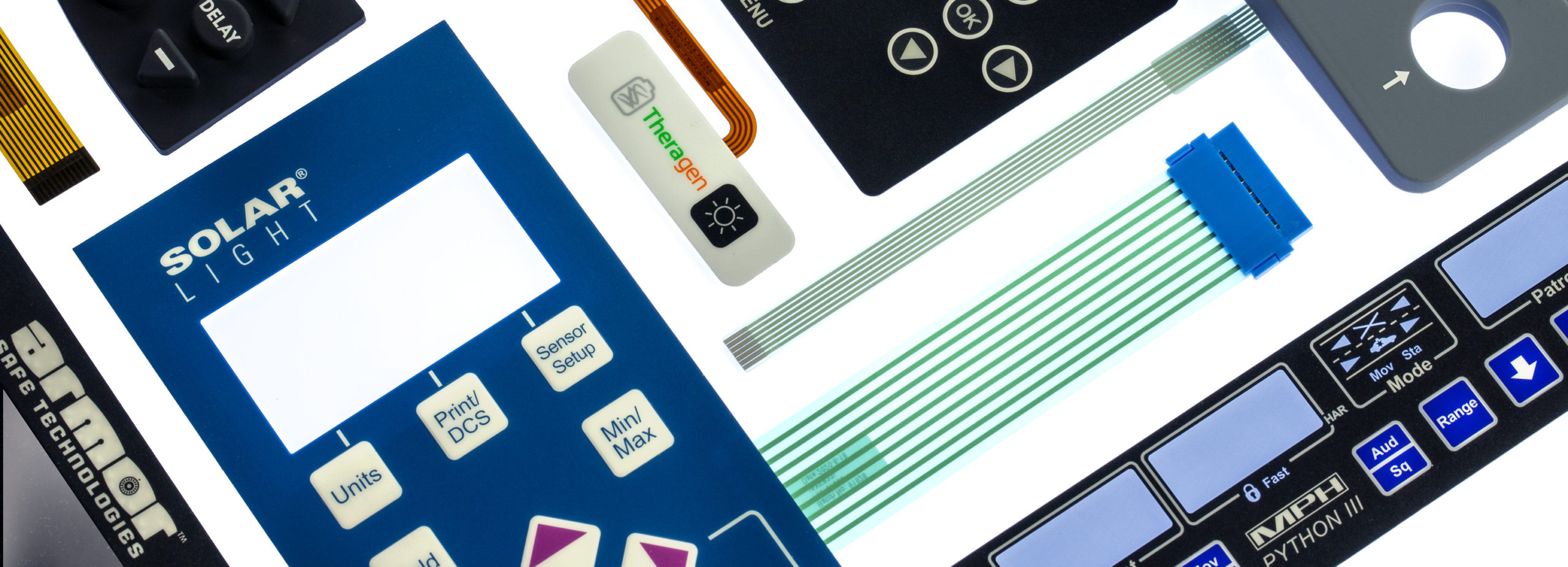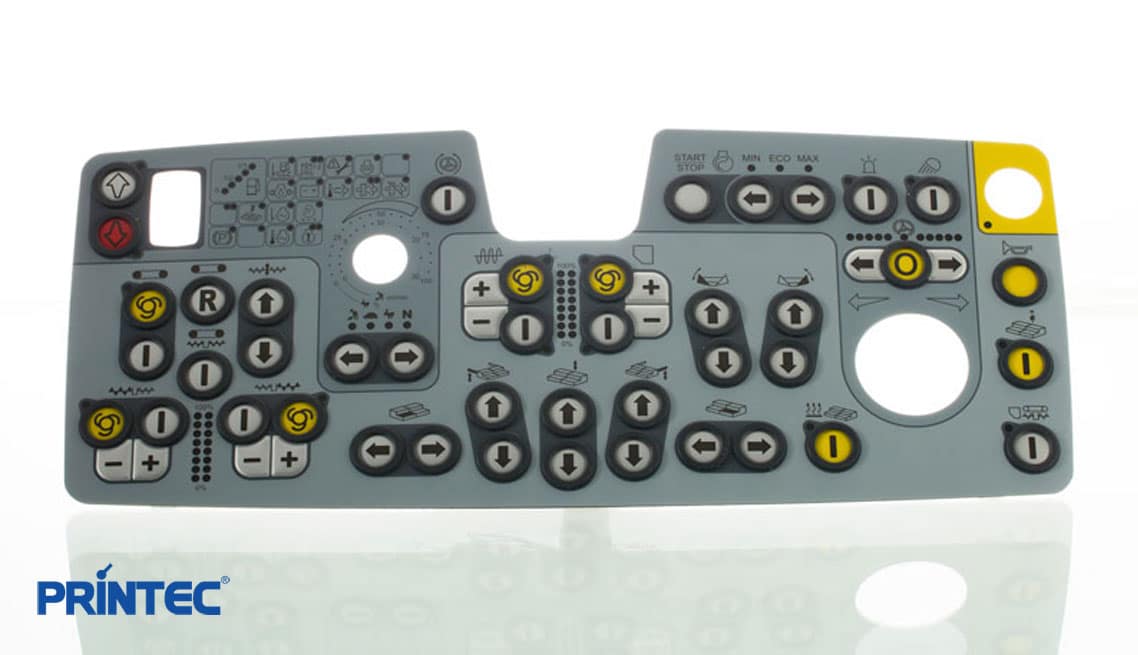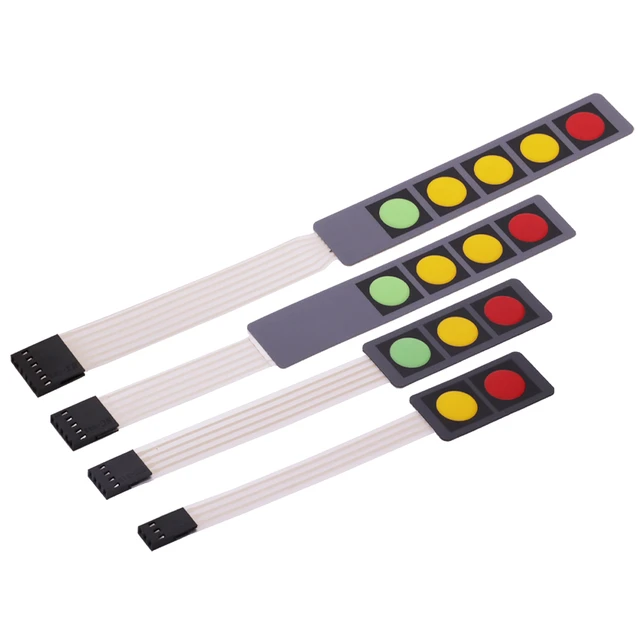Why Membrane Switches are Ideal for Durability and Performance
Wiki Article
Comprehending Membrane Layer Switches Over: The Key to Reliable and long lasting Controls

What Are Membrane Buttons?
Membrane buttons are an advanced service in the realm of customer interface technology, combining performance and style perfectly. These devices work as a user interface between individuals and electronic systems, integrating several parts right into a small layout. Usually built from versatile, thin layers of materials, membrane switches are made to react to touch, making it possible for individuals to communicate with equipment and digital devices efficiently.The key components of a membrane switch include a printed circuit layer, visuals overlay, and a spacer layer that avoids unplanned activation. The visuals overlay can be tailored to mirror brand name identity or individual preferences, boosting appearances while guaranteeing functionality. Membrane switches are generally made use of in numerous applications, including clinical devices, consumer electronic devices, and commercial equipment, owing to their resilience and resistance to ecological variables such as dampness and dirt.
Among the crucial benefits of membrane switches is their capacity to hold up against damage, making them optimal for high-traffic atmospheres. Furthermore, they are light-weight and need marginal space, permitting innovative designs in product advancement. Generally, membrane switches over stand for a effective and useful choice for modern digital user interfaces, marrying innovation with user-centric style principles.
How Membrane Switches Job
The procedure of membrane layer switches over rest on a simple yet efficient system that equates customer input into electronic signals. These buttons contain several layers, normally consisting of a visuals overlay, a spacer layer, and a circuit layer. When a customer presses the switch, the leading layer flaws, permitting a conductive element in the circuit layer to reach an equivalent conductive pad on the bottom of the graphic overlay. This call closes the circuit and sends a digital signal to the device, suggesting that the switch has actually been triggered.The layout of membrane layer switches can differ, however they often integrate domes or tactile components to supply feedback to the individual, boosting the general experience - membrane switch. The materials utilized in membrane switches, such as polyester or polycarbonate, add to their durability and resistance to ecological aspects, including moisture and dirt. The published circuits are generally enveloped, which shields them from wear and tear over time.
Advantages of Membrane Switches

Furthermore, membrane layer switches are understood for their longevity. Built from durable products, they are resistant to dirt, moisture, and physical wear, which considerably prolongs their life-span compared to traditional mechanical buttons. This sturdiness makes them specifically suitable for high-traffic settings and applications requiring long life.
One more substantial advantage is the simplicity of cleansing and upkeep. The smooth surface area of membrane switches minimizes dirt build-up and is usually invulnerable browse around this web-site to spills, his explanation making them suitable for setups that call for frequent sanitization.
Furthermore, membrane switches offer a structured account, resulting in a thinner layout that can be incorporated right into different devices without adding bulk. This attribute not just boosts the visual appeal yet likewise adds to an extra ergonomic product design.
Applications of Membrane Layer Buttons
User-friendly and versatile, membrane layer buttons discover applications across a vast array of markets, consisting of medical tools, customer electronics, and commercial tools. In the clinical field, these switches are essential to gadgets such as analysis tools, patient tracking systems, and mixture pumps, where reliability and ease of cleaning are crucial. Their capacity to keep and stand up to harsh atmospheres performance makes them suitable for such applications.
In consumer electronic devices, membrane layer buttons are utilized in items like microwaves, washing makers, and remote controls - membrane switch. Their sleek design enables for instinctive interface, enhancing the total customer experience while giving toughness and resistance to tear and wear
Industrial tools additionally benefits from membrane switches, specifically in control panels for machinery and automation systems. These switches supply security versus dust and wetness, guaranteeing consistent efficiency in tough settings. Their adjustable features allow makers to tailor them to specific functional needs, improving efficiency and functionality.
Selecting the Right Membrane Layer Switch
When selecting a membrane switch, it is important to think about numerous factors that influence performance and viability for certain applications. The primary considerations consist of ecological problems, tactile feedback, longevity, and layout requirements.
First, assess the operating environment; buttons revealed to moisture, chemicals, or extreme temperature levels call for particular he said products to guarantee long life and performance. Next, evaluate the demand for responsive feedback. Relying on user communication, some applications may profit from a responsive action to confirm activation, while others may prefer a non-tactile layout for visual reasons.
Sturdiness is another critical variable; membrane layer switches ought to be created to endure constant usage, impacts, and abrasion. Ensure the selected switch can sustain the expected lifecycle, specifically in high-usage circumstances.

Final Thought
Finally, membrane switches over function as necessary components in the design of trusted and resilient control systems across numerous markets. Their portable design, combined with robust building and construction and adjustable attributes, improves customer communication while ensuring long life in demanding settings. The adaptability of membrane switches over enables customized services that fulfill particular functional requirements, enhancing their relevance in modern-day technology. As sectors remain to advance, the significance of incorporating effective membrane layer button options can not be overemphasized.
Membrane switches over represent an important aspect of modern user interface design, mixing capability with strength in various applications.Membrane switches are an advanced remedy in the realm of user interface innovation, incorporating functionality and style effortlessly. Typically constructed from versatile, thin layers of materials, membrane layer buttons are created to react to touch, enabling users to communicate with machinery and digital tools properly.
The design of membrane switches can differ, yet they often incorporate domes or tactile elements to offer comments to the individual, enhancing the overall experience.In conclusion, membrane switches offer as crucial parts in the layout of sturdy and reliable control systems throughout numerous sectors.
Report this wiki page